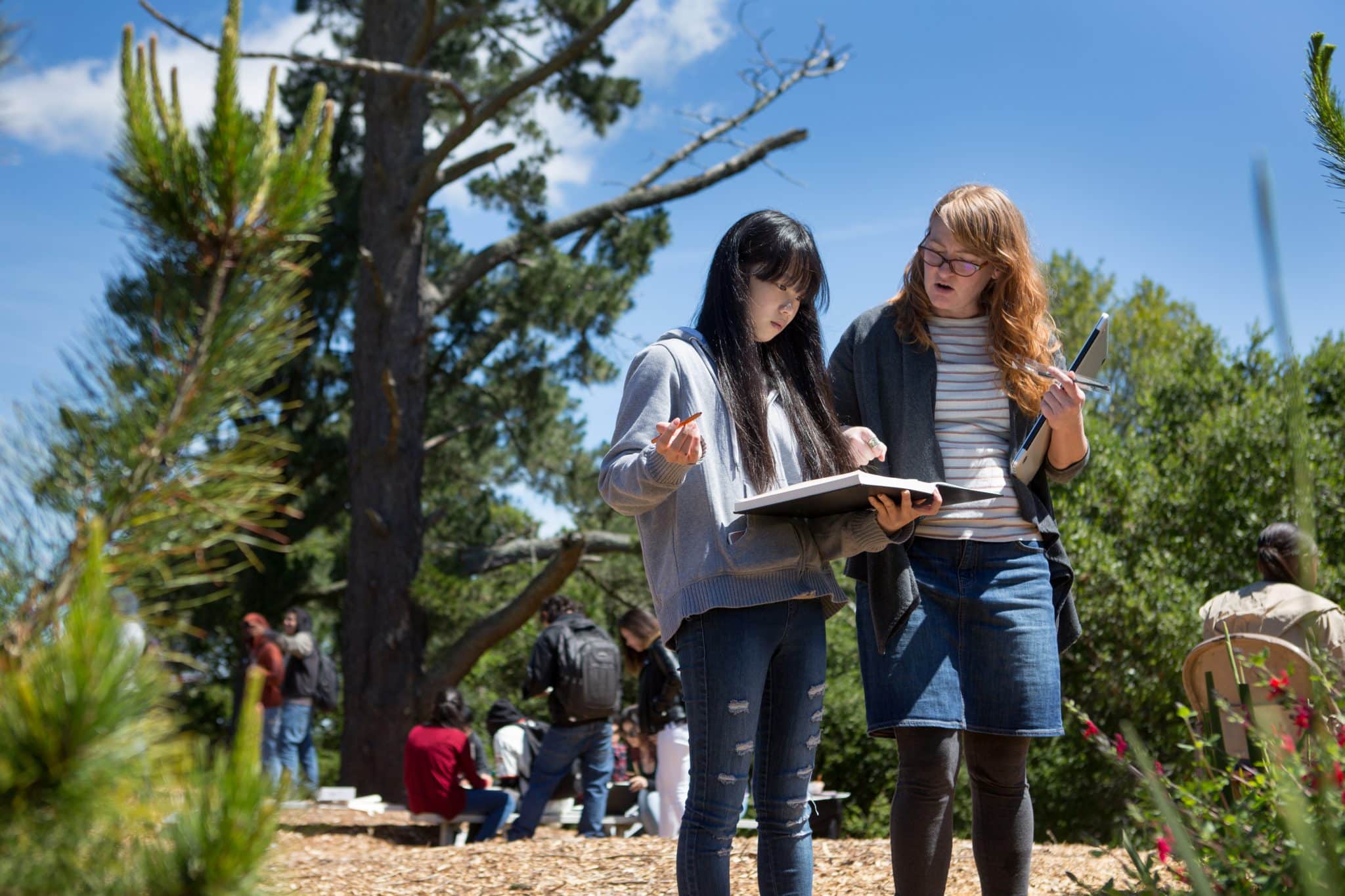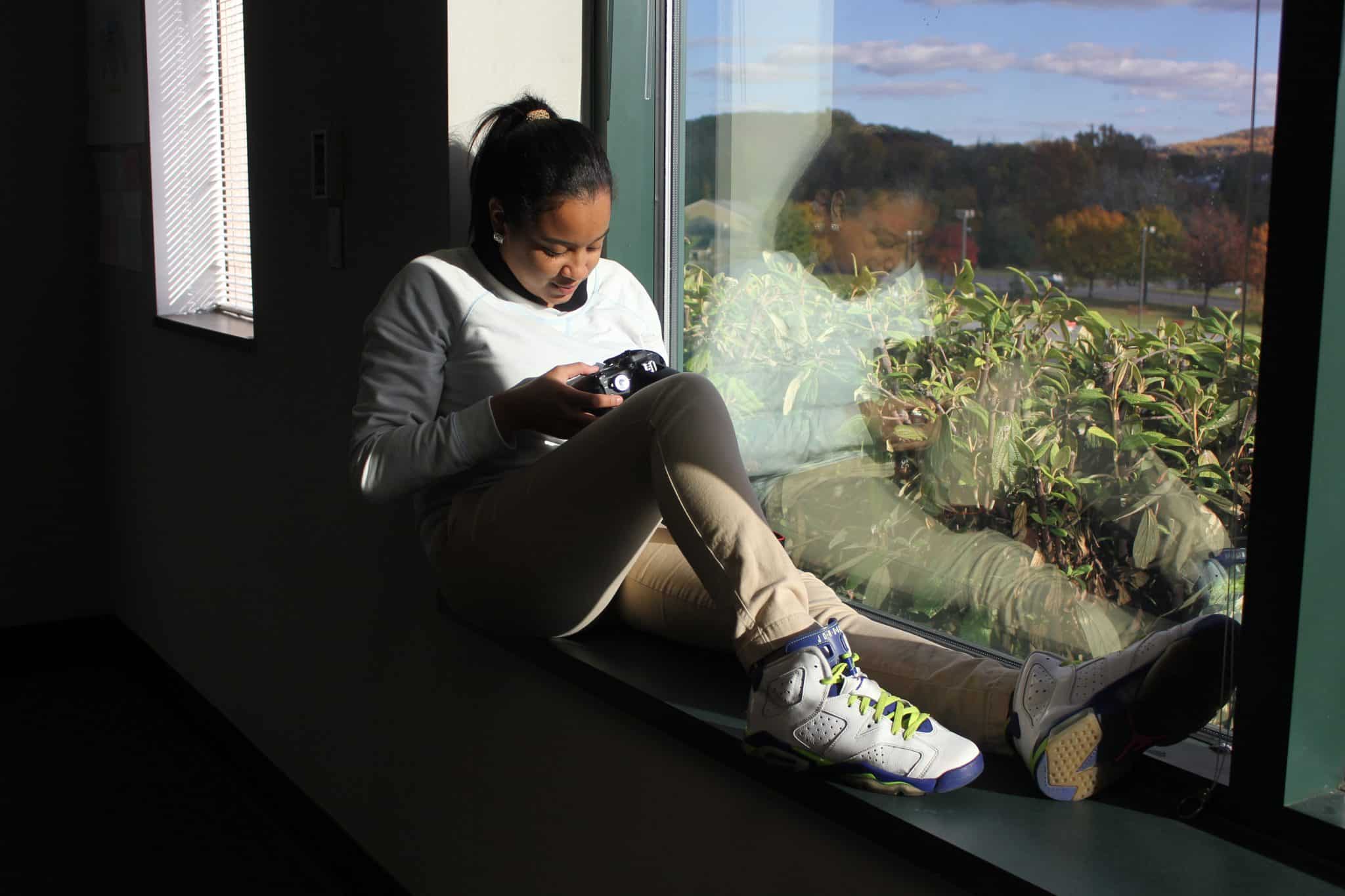Summing up the Competency-Based Education Journey
CompetencyWorks Blog

Photo: Allison Shelley
While attending a recent education conference focused on innovation, I could not help but notice a pattern across many presentations and discussions. Panelists and attendees were talking about different experiences students were having outside of the school day—in after-school programs, work and internship experiences, community service, place-based learning—and how they wished there was a way for students to receive “credit” for these experiences. Sentences that started with, “If only there was a way…” or, “No one has come up with a way yet…”
Well, I hope that my recent series of blog posts demonstrates clearly that THERE IS A WAY. Across eight blog posts, I have outlined the necessary shifts that I believe need to occur in mindsets, teaching and learning, structures, and systems in order to successfully transition to a more personalized and competency-based model. And yet, sitting in the audience at this conference, I could not help but wonder…how do we better communicate the power and the possibilities that competency-based education (CBE) holds for unbundling learning from the traditional structures of school and allowing all learning experiences both in and out of school to “count” for students?
CBE enables “crediting” or “counting” all of the learning that students experience both within and outside of school. Transitioning to a CBE model is a big decision and requires commitment, but as these eight blog posts demonstrate, it is both doable and worth doing. Competency-based education opens up so many possibilities to engage students in meaningful learning experiences anywhere and everywhere. If you are interested in exploring how, let’s talk!
I hope that the resources below—a brief summary of the blog series—help to spread the word about CBE, so that presenters and attendees of future conferences recognize the power and potential CBE holds in building personalized models of anytime, anywhere learning.
1: Why Should Schools Transition to Competency-Based Education?
Do you want to create personalized pathways through school for students? Do you want to create alternative pathways to graduation? Do you want to replace traditional structures of courses and grade levels but don’t know how? Do you want to “credit” learning experiences that happen outside of the school day? Is school not working for some (or all) of your students? If you answered yes to any of these questions, read this blog post and consider if CBE is the right solution for you.
2: Preparing for Your Competency-Based Education Journey: A Process for Success
You have decided to make the journey to a more personalized and competency-based model, but you don’t know where to start. This blog post will help you think about a process to get you started on your CBE journey!
3: Building 21’s Teacher Competencies to Facilitate Competency-Based Learning
If the goal for transitioning to CBE is to change outcomes for students, then—working backwards—what needs to change for the adults, and how do we clearly define and communicate those changes? In transitioning to personalized and competency-based learning, it is equally important to outline what we want the adults to know and be able to do as it is to define that for our students. Read this blog to learn more about Building 21’s five Teacher Competencies: Building Relationships, Personal and Professional Growth and Development, Mentoring Through Advisory, Designing for Engagement and Impact, and Facilitating Personalized Learning.
4: Building 21’s Leadership Competencies to Facilitate Competency-Based Learning
Continuing with the backwards design process, if we know what outcomes we want for our students, and we have defined the skills, mindsets, practices, and beliefs that we want to develop in our teachers to achieve these desired student outcomes, what does that mean for our leaders? There are many qualities that all leaders need to be effective. But there are specific qualities that we are looking for in leaders of an innovative change process—in this case, a journey to personalized and competency-based learning. Read this blog post to learn more about Building 21’s six Leadership Competencies: Create a Just, Equitable, and Caring Learning Environment; Commit to Personal and Professional Growth and Development; Foster a Cohesive Vision; Ensure High Quality Instruction and Learning Experiences; Build the Capacity of Others; and Continuous Improvement Through Data-Driven Decision Making.

5: Building 21’s Studio Model: Designing Learning Experiences for Engagement and Impact
To realize the potential of competency-based learning, we must fundamentally shift how we design learning experiences to ensure that they:
- Are student-centered
- Culminate in a performance-based assessment that calls on students to apply knowledge and skills
- Provide opportunities for feedback and revision
- Are rated against a transparent continuum or scale providing individualized information on learning, growth, and progress
- Provide opportunities for students to make a real-world impact
Read this blog post to learn more about how Building 21 replaces traditional courses with project-based learning and CBE Studio Design.
6: Replacing the Grammar of Schooling with Competency-Based Innovations
In order to rethink traditional structures, you have to replace them with something. Rethinking traditional structures does not equate to having no structures at all. This is a common misconception about competency-based education. In fact, a competency-based framework provides the necessary structure to replace age-based, grade-based, time-based, course-based, and content-driven structures in a way that truly places the learner at the center. Read this blog post to learn more about how CBE can become the new grammar of schooling.
7: Rethinking the Master Schedule in Competency-Based Schools
What and who drives the design of your master schedule? Your goals and priorities for teaching and learning should guide the design of your master schedule. How do you believe teaching and learning should be organized to maximize your resources and improve learning outcomes for students, and how can you redesign the master schedule to support those goals?
Read this blog post to learn more about the power of the master schedule and to challenge your assumptions about what is and is not possible in scheduling.
8: Transparently Tracking and Communicating Progress and Growth in Competency-Based Schools
The ability to track, monitor, and communicate student progress and growth transparently in a competency-based model remains one of the biggest challenges when transitioning to CBE. It is essential to the success of CBE to find the right systems and tools to support this new grammar of schooling. Read this blog post to learn more about some effective tools and platforms that support the tracking, monitoring, and communication of progress and growth in CBE models.
As this series comes to an end, a new one begins! My next blog series will go deeper into many of the topics outlined above and help you gain a deeper understanding of all of the possibilities that CBE holds for reimagining teaching and learning for our adults and our students, while continuing to provide you with concrete examples and resources for you to use on your journey to CBE. Stay tuned!
Learn More
- Why Should Schools Transition to Competency-Based Education?
- Preparing for Your Competency-Based Education Journey: A Process for Success
- Building 21’s Teacher Competencies to Facilitate Competency-Based Learning
- Building 21’s Leadership Competencies to Facilitate Competency-Based Learning
- Building 21’s Studio Model: Designing Learning Experiences for Engagement and Impact
- Replacing the Grammar of Schooling with Competency-Based Innovations
- Rethinking the Master Schedule in Competency-Based Schools
- Transparently Tracking and Communicating Progress and Growth in Competency-Based Schools
 Sandra Moumoutjis is the Executive Director of Building 21’s Learning Innovation Network which is designed to grow and support a community of schools and districts as they transition to competency-based education. Through professional development and coaching, Sandra supports schools and districts in all aspects of the change management process. Sandra is the co-designer of Building 21’s Competency Framework and instructional model. Prior to working for Building 21, Sandra was a teacher, K-12 reading specialist, literacy coach, and educational consultant in districts across the country.
Sandra Moumoutjis is the Executive Director of Building 21’s Learning Innovation Network which is designed to grow and support a community of schools and districts as they transition to competency-based education. Through professional development and coaching, Sandra supports schools and districts in all aspects of the change management process. Sandra is the co-designer of Building 21’s Competency Framework and instructional model. Prior to working for Building 21, Sandra was a teacher, K-12 reading specialist, literacy coach, and educational consultant in districts across the country.